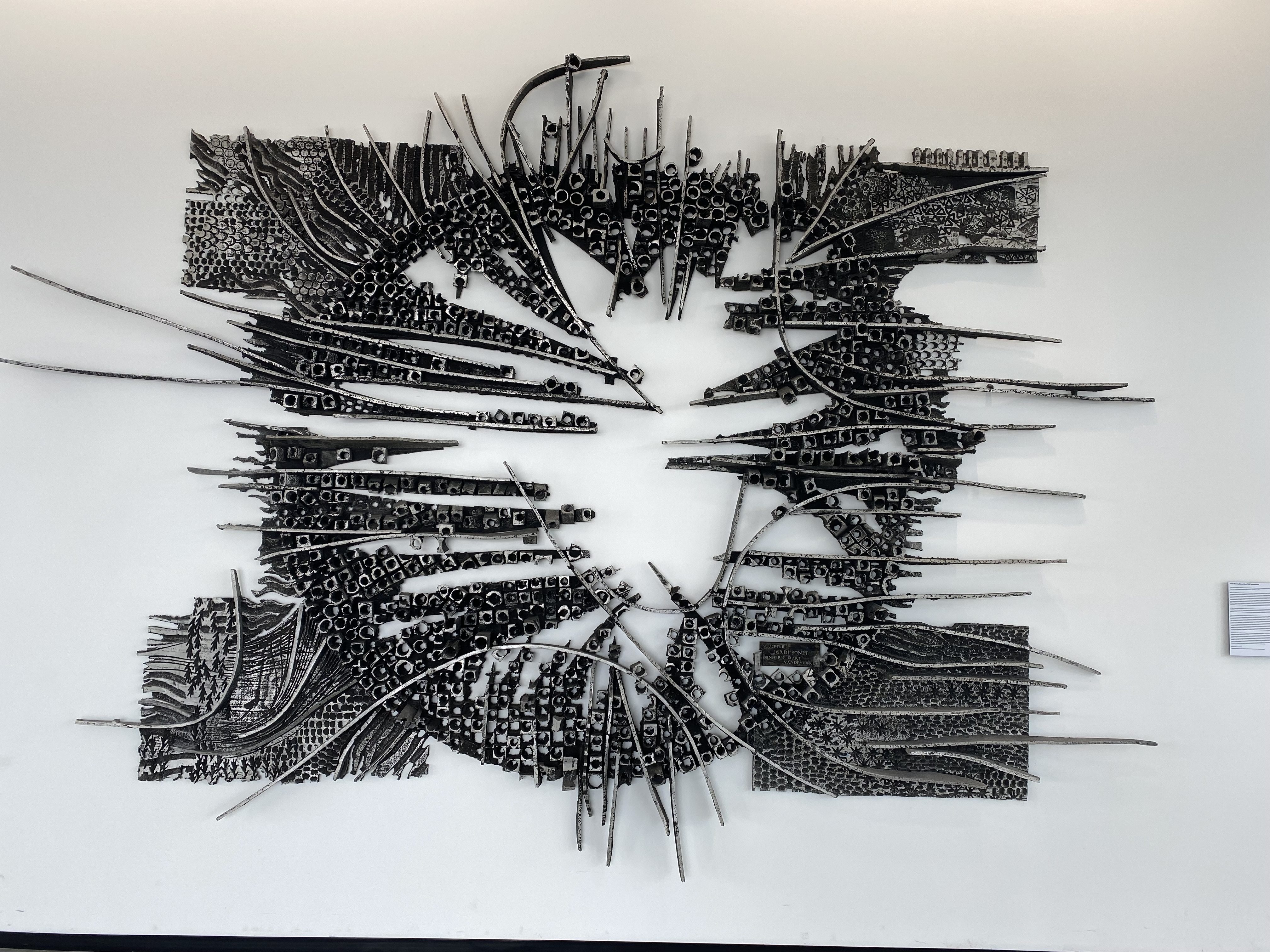
Untitled
Jordi Bonet, 1967
Background
“Art is the collective wealth of all people: Everyone is entitled to find it in the home they live in, in the object they use, everywhere in the country they inhabit.” Jordi Bonet, 1974
Born May 7, 1932, in Barcelona, Spain, died December 25, 1979, in Montreal, Jordi Bonet was the son of a surgeon and the nephew of the architect who succeeded Antoni Gaudi in his work on the Sagrada Familia church in Barcelona. At the age of seven, he fell badly and his right arm had to be amputated. This dramatic event marked his life. To distract him, his father encouraged him to turn to art. In 1950, he entered the School of Fine Arts in Barcelona. In 1954, invited by a friend, he arrived in Quebec and, two years later, began to explore ceramics. He started out with utilitarian objects, then created his first large-scale mural in 1961 for the Saint-Raphaël church in Jonquière, which led to many others, in ceramic, concrete and cast aluminum. The artist chose aluminum for its ability to reflect light.
In 1966, he began experimenting with aluminum, notably with doors for the National Arts Centre in Ottawa. In April 1967, Jordi Bonet was commissioned by the Port of Montreal to create two aluminum sculptures to mark the opening of two cruise ship terminals. He delivered them one month later.
The artwork
According to the artist, this work represents the sun as a symbol of tourism and hospitality. He took into account the purpose of the places where his works were placed and the particular context of Expo 67, the world’s fair located nearby. Four plaques located at each corner call to mind the points of the compass; they could also evince a bird’s eye view of the earth. The rays of the sun are visually rendered by large aluminum rods that shoot out and extend beyond them. Jordi Bonet’s artistic vocabulary has often drawn on natural elements, particularly the sun’s fertilizing power. Here he expresses the energy of the rays in uneven and sometimes curved lines. The hollowed-out tubes around the rods evoke the explosions on the sun’s surface. The other more abstract elements reference the telluric forces. The diversity of textures gives the sculpture vibrancy and an abundance of details to contemplate. Beyond the theme, what fascinates the artist is working with the material.
The two works in the Port stand out from all his other commissions. For each of them, the artist adapted to his subject, be it a church, a school, a theatre or a cruise terminal. Jordi Bonet often asserted the importance of public art as an art form accessible to all and as a key aspect of his artistic production. Several of the artist’s monumental works can be found in Quebec, including the concrete mural at the Grand Théâtre de Québec and the ceramic mural on the facade of the Faculty of Science and Engineering at Université Laval. He has also completed numerous commissions in the rest of Canada and the United States, including the stained glass windows in the Our Lady of the Sky Chapel at Kennedy International Airport in New York.
Pascale Beaudet, Ph. D.
The author thanks Laurent Bonet, son of the artist, for his invaluable assistance.
